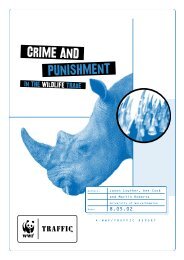In full swing: assessment of trade in orang-utans and ... - WWF UK
In full swing: assessment of trade in orang-utans and ... - WWF UK
In full swing: assessment of trade in orang-utans and ... - WWF UK
Create successful ePaper yourself
Turn your PDF publications into a flip-book with our unique Google optimized e-Paper software.
a great many small isolated populations. On the basis <strong>of</strong> the small population size <strong>and</strong> reduction <strong>of</strong> habitat, the species<br />
is considered Critically Endangered by the IUCN Red List (Anon, 2004b).<br />
Agile Gibbon H. agilis: This species occurs throughout Sumatra, apart from the northernmost part (roughly north <strong>of</strong><br />
Lake Toba) where it is replaced by the White-h<strong>and</strong>ed Gibbon. Outside Sumatra, it occurs <strong>in</strong> a small area on the Thai-<br />
Malayan Pen<strong>in</strong>sula. Like the Javan Gibbon, it is most abundant <strong>in</strong> lowl<strong>and</strong> forest, although it does occur up to c. 1500<br />
m asl. Forest destruction on Sumatra has not yet reached the same level as it has on Java or Bali. <strong>In</strong> recent years,<br />
however, the area <strong>of</strong> (especially) lowl<strong>and</strong> forest has seen a dramatic reduction largely due to illegal logg<strong>in</strong>g (Whitten et<br />
al., 2000). Consequently, populations <strong>of</strong> Agile Gibbons <strong>in</strong> these habitats must have seen an equal reduction, although<br />
little data are available. Populations <strong>in</strong> the more mounta<strong>in</strong>ous parts <strong>of</strong> the isl<strong>and</strong> seem to be more secure, but, as with<br />
the Javan Gibbon, densities at these altitudes are considerably lower. At present, the Agile Gibbon is listed as Lower<br />
Risk / near threatened by the IUCN Red List (Anon, 2004b).<br />
Bornean White-bearded Gibbon H. albibarbis: Formerly generally considered a subspecies <strong>of</strong> the Agile Gibbon,<br />
consistent differences <strong>in</strong> morphological (Groves, 2001), vocal (Geissmann, 1995) <strong>and</strong> genetic characters (Garza &<br />
Woodruff, 1992) clearly suggest the Bornean White-bearded Gibbon represents a unique evolutionary unit. The species<br />
is endemic to the south-western quarter <strong>of</strong> Borneo where it is found <strong>in</strong> the area south <strong>of</strong> the Kapuas River <strong>and</strong> west <strong>of</strong><br />
the Barito River. <strong>In</strong> comparison with other gibbons, a relatively large part <strong>of</strong> the distribution range <strong>of</strong> the Bornean Whitebearded<br />
Gibbon is still forested. The majority <strong>of</strong> this is, however, h<strong>and</strong>ed out as logg<strong>in</strong>g concessions, br<strong>in</strong>g<strong>in</strong>g the<br />
species <strong>in</strong> ever-closer contact with humans. Especially <strong>in</strong> the <strong>in</strong>terior <strong>of</strong> Borneo, hunt<strong>in</strong>g <strong>of</strong> White-bearded Gibbons<br />
poses a serious threat to the survival <strong>of</strong> the species (see also the account for Müller’s gibbon). The species has not yet<br />
been assigned to a particular threat category by the IUCN Red List (2004) as the species is <strong>in</strong>cluded as a subspecies <strong>of</strong><br />
the Agile Gibbon.<br />
Credit: Julia Ng/TRAFFIC Southeast Asia<br />
Müller’s Gibbon H. muelleri: Müller’s Gibbon is endemic to<br />
the isl<strong>and</strong> <strong>of</strong> Borneo where it occurs north <strong>of</strong> the Kapuas River<br />
<strong>and</strong> east <strong>of</strong> the Barito River, <strong>and</strong> as such, has been recorded <strong>in</strong><br />
Sarawak, Sabah, Brunei, East <strong>and</strong> South Kalimantan, <strong>and</strong> small<br />
parts <strong>of</strong> West Kalimantan. The rema<strong>in</strong>der <strong>of</strong> the isl<strong>and</strong> is<br />
<strong>in</strong>habited by the endemic Bornean White-bearded Gibbon. As<br />
with the latter species, Müller’s Gibbon is mostly threatened by<br />
habitat destruction. Although the total area <strong>of</strong> forest on Borneo<br />
is still large compared to other parts <strong>of</strong> the distribution range <strong>of</strong><br />
gibbons, every year vast areas are cleared for timber production,<br />
transmigration or agriculture <strong>and</strong> are <strong>in</strong>creas<strong>in</strong>gly lost due to<br />
arson (e.g., Rijksen & Meijaard, 1999). Numbers <strong>of</strong> Bornean<br />
Gibbons are decl<strong>in</strong><strong>in</strong>g overall because <strong>of</strong> habitat disturbance or<br />
habitat alteration, <strong>and</strong> populations <strong>in</strong> some areas have been<br />
greatly reduced or even elim<strong>in</strong>ated by hunt<strong>in</strong>g. Borneo's <strong>in</strong>terior<br />
is <strong>in</strong>habited, by <strong>and</strong> large, by the Dayak <strong>and</strong> the Penan / Punan<br />
tribes <strong>and</strong> all animals larger than a rat (hence <strong>in</strong>clud<strong>in</strong>g all<br />
Müller’s Gibbon Hylobates muelleri<br />
species <strong>of</strong> primate) are hunted by these tribes (Caldecot, 1988,<br />
1992). Local gibbon populations are easily exterm<strong>in</strong>ated by<br />
hunt<strong>in</strong>g because <strong>of</strong> the species' loud songs, which attract attention; monogamy, which easily disrupts breed<strong>in</strong>g; <strong>and</strong><br />
strong sedentary behaviour, which renders both evasion <strong>of</strong> hunters <strong>and</strong> rapid re-colonization <strong>of</strong> depopulated areas more<br />
difficult (Bennett et al., 1987). At present, the Muller Gibbon is listed as Lower Risk / near threatened by the IUCN Red<br />
List (Anon, 2004b).<br />
IN FULL SWING:ASSESSMENT OF TRADE IN ORANGUTANS AND GIBBONS ON JAVA AND BALI,INDONESIA 5


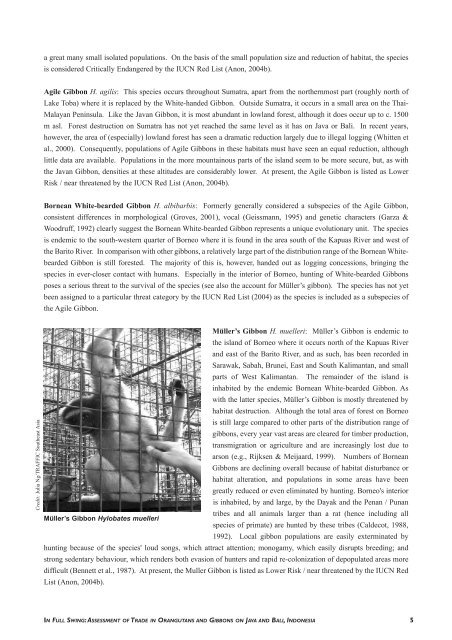
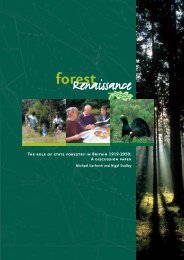

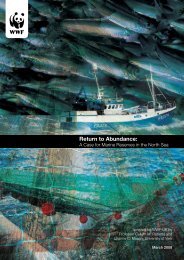

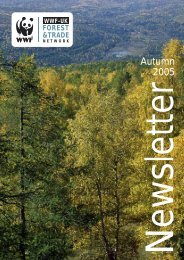

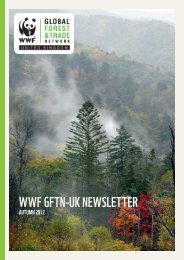
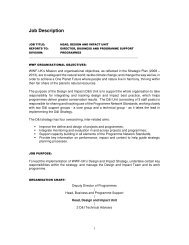

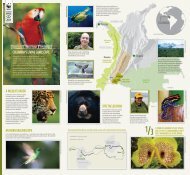
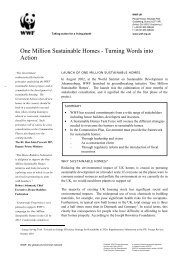
![[PDF] Causes for concern: chemicals and wildlife - WWF UK](https://img.yumpu.com/31929970/1/184x260/pdf-causes-for-concern-chemicals-and-wildlife-wwf-uk.jpg?quality=85)
